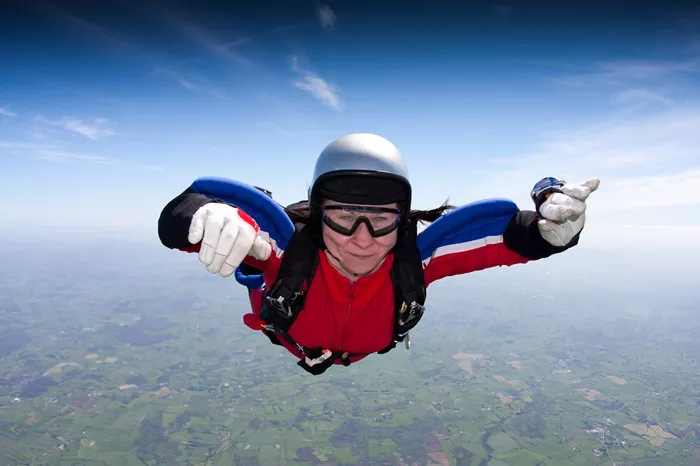Skydiving is often seen as the ultimate adrenaline rush, a thrilling experience that offers an unparalleled sense of freedom and excitement. However, for individuals with high blood pressure, this exhilarating activity can pose serious health risks. Understanding why skydiving is not recommended for those with high blood pressure is crucial for ensuring safety and well-being.
Understanding High Blood Pressure
What is High Blood Pressure?
High blood pressure, also known as hypertension, is a medical condition where the force of the blood against the artery walls is consistently too high. Blood pressure is measured in millimeters of mercury (mm Hg) and is given as two numbers: systolic pressure (the pressure in your arteries when your heart beats) and diastolic pressure (the pressure in your arteries when your heart rests between beats). Normal blood pressure is typically around 120/80 mm Hg.
Causes of High Blood Pressure
High blood pressure can be caused by a variety of factors, including:
Genetics: A family history of hypertension increases the risk.
Diet: High salt intake, low potassium intake, and excessive alcohol consumption can contribute to hypertension.
Lifestyle: Lack of physical activity, smoking, and obesity are significant risk factors.
Stress: Chronic stress can elevate blood pressure over time.
Medical Conditions: Conditions such as diabetes and kidney disease can lead to high blood pressure.
Symptoms and Diagnosis
High blood pressure often has no symptoms, earning it the nickname “the silent killer.” When symptoms do occur, they might include headaches, shortness of breath, or nosebleeds. Diagnosis is typically done through regular blood pressure monitoring.
The Physiology of Skydiving
The Adrenaline Rush
Skydiving triggers a massive adrenaline surge. Adrenaline, also known as epinephrine, is a hormone that prepares your body for “fight or flight.” It increases heart rate, constricts blood vessels, and raises blood pressure. This physiological response is what makes skydiving so exhilarating but also potentially dangerous for those with hypertension.
Physical Demands of Skydiving
The physical demands of skydiving include:
Rapid Altitude Changes: These can affect blood pressure and heart rate.
Wind Resistance: Managing body position against high wind speeds requires physical strength and endurance.
Parachute Deployment: The sudden jerk when the parachute deploys can add significant stress to the body.
Risks of Skydiving with High Blood Pressure
Increased Heart Rate and Blood Pressure
For individuals with high blood pressure, the additional increase in heart rate and blood pressure during skydiving can be hazardous. The surge in adrenaline can lead to hypertensive crises, where blood pressure spikes dangerously high.
Risk of Heart Attack or Stroke
The combination of adrenaline and the physical demands of skydiving can trigger a heart attack or stroke in individuals with hypertension. The risk is particularly high for those with uncontrolled or poorly managed high blood pressure.
Oxygen Levels and Hypoxia
Skydiving from high altitudes can lead to lower oxygen levels (hypoxia). For individuals with high blood pressure, reduced oxygen availability can strain the cardiovascular system, leading to serious complications.
Case Studies and Medical Opinions
Expert Opinions
Medical professionals, including cardiologists, generally advise against skydiving for individuals with high blood pressure. The consensus is that the risks far outweigh the potential thrills, and safer alternatives should be considered.
Real-Life Incidents
There have been documented cases where individuals with high blood pressure experienced severe health events during or after skydiving. These incidents highlight the importance of adhering to medical advice and not underestimating the risks.
read more: Embracing The Thrill Of 12,000 Ft
Alternative Activities for Thrill-Seekers with High Blood Pressure
Indoor Skydiving
Indoor skydiving in a vertical wind tunnel can provide a similar thrill without the extreme physical demands and risks associated with traditional skydiving.
Scuba Diving
Scuba diving offers an adventurous experience while being less strenuous on the cardiovascular system. However, it’s still essential to get medical clearance before diving.
Hot Air Ballooning
For those seeking aerial adventures, hot air ballooning can be a more serene and less physically demanding option compared to skydiving.
Managing High Blood Pressure for a Healthier Life
Regular Exercise
Engaging in regular physical activity, such as walking, swimming, or cycling, can help manage blood pressure levels effectively.
Healthy Diet
Adopting a diet rich in fruits, vegetables, whole grains, and lean proteins while reducing salt and alcohol intake can significantly impact blood pressure control.
Stress Management
Techniques such as meditation, yoga, and deep breathing exercises can help manage stress and, in turn, lower blood pressure.
Medication and Regular Check-ups
For many individuals, medication may be necessary to manage high blood pressure. Regular check-ups with a healthcare provider are crucial for monitoring and adjusting treatment as needed.
Conclusion
While the thrill of skydiving is undeniable, it is not worth the potentially life-threatening risks for individuals with high blood pressure. Understanding the physiological demands and risks associated with skydiving is essential for making informed decisions about participating in such activities. By exploring safer alternatives and adopting a healthy lifestyle, thrill-seekers with high blood pressure can still enjoy adventurous experiences without compromising their health.
related topics:
- Mastering The Skies: How Long Does Tandem Skydiving Training Take?
- Exploring The Mechanics Of Indoor Skydiving: How Does It Work?
- Exploring The Causes Of Skydiving Fatalities: Understanding Risks And Prevention Strategies

